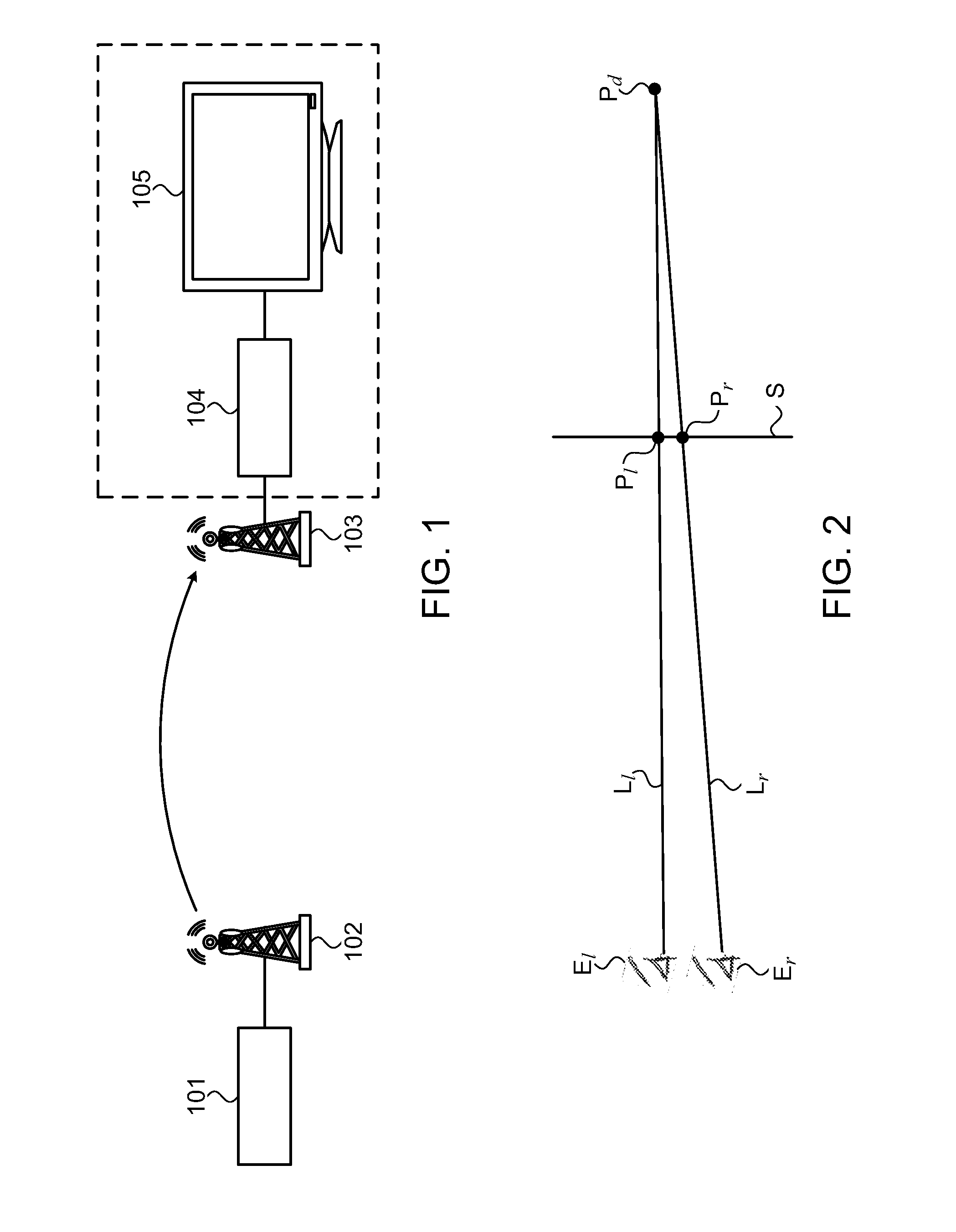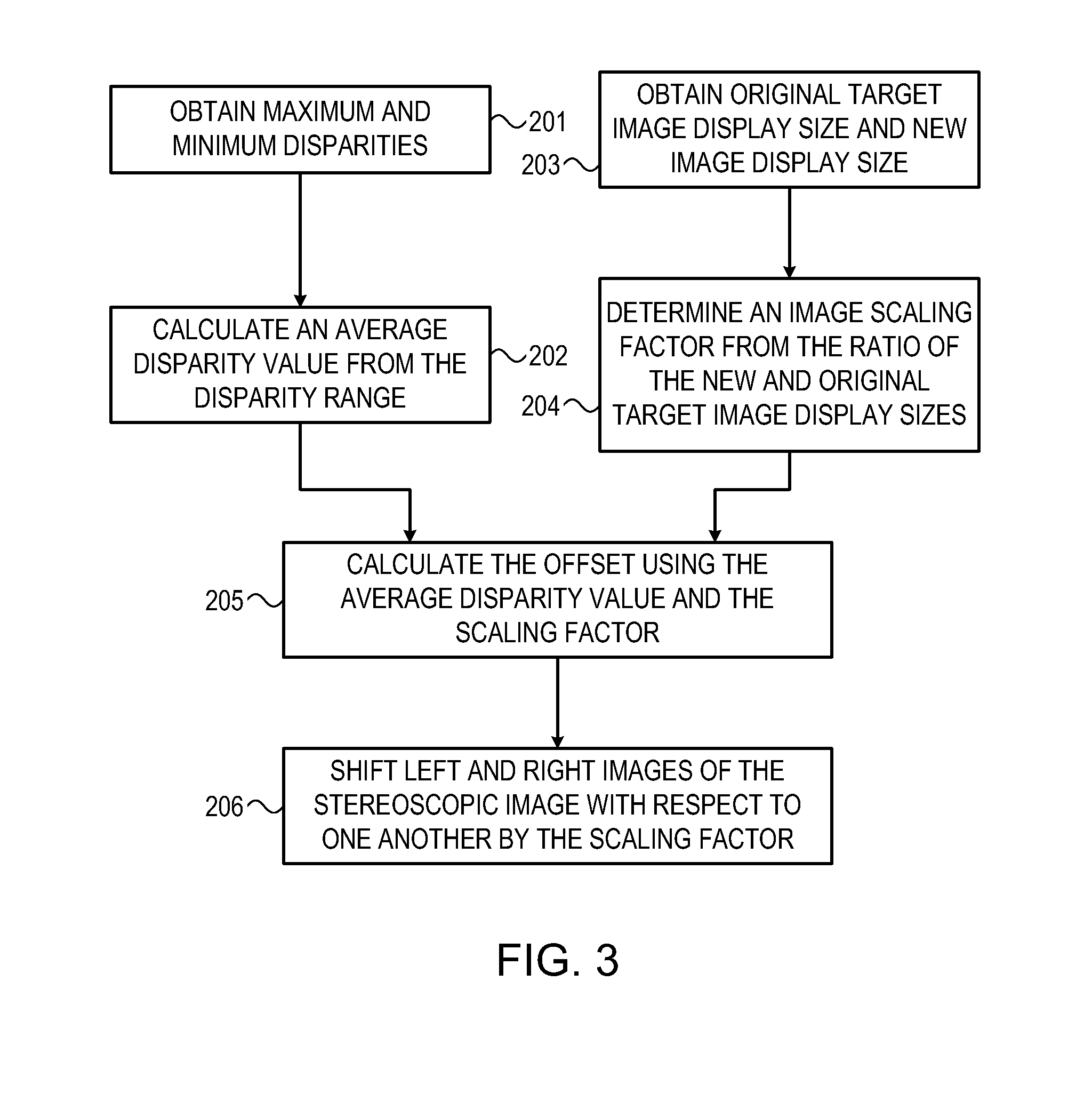Image Scaling
a technology of image scaling and depth information, applied in the field of image scaling, can solve problems such as distortion of depth information, and achieve the effects of reducing processing time, reducing depth information errors, and reducing processing costs
- Summary
- Abstract
- Description
- Claims
- Application Information
AI Technical Summary
Benefits of technology
Problems solved by technology
Method used
Image
Examples
Embodiment Construction
[0060]Reference is now made to FIG. 1, which provides an overview of the system of a first embodiment of the present invention.
[0061]In FIG. 1, a television broadcaster 101 provides a three-dimensional image, represented as a pair of two-dimensional images, to be transmitted to a transmitter 102, which then transmits the three-dimensional image as a wireless signal to a receiver 103. The television broadcaster 101 and transmitter 102 shall hereinafter be referred to as the head-end 101, 102 of the system.
[0062]The receiver 103 is connected to a set-top box 104. The set-top box 104 then performs any required processing on the received signal. The processed signal is then provided to a display 105 for being displayed. The processing carried out by the set-top box will include means for compensating for the errors that occur when scaling the images of the received signal to the screen size of the display 105. The set-top box 104 is arranged to perform pre-display depth processing. Such...
PUM
 Login to View More
Login to View More Abstract
Description
Claims
Application Information
 Login to View More
Login to View More - R&D
- Intellectual Property
- Life Sciences
- Materials
- Tech Scout
- Unparalleled Data Quality
- Higher Quality Content
- 60% Fewer Hallucinations
Browse by: Latest US Patents, China's latest patents, Technical Efficacy Thesaurus, Application Domain, Technology Topic, Popular Technical Reports.
© 2025 PatSnap. All rights reserved.Legal|Privacy policy|Modern Slavery Act Transparency Statement|Sitemap|About US| Contact US: help@patsnap.com



